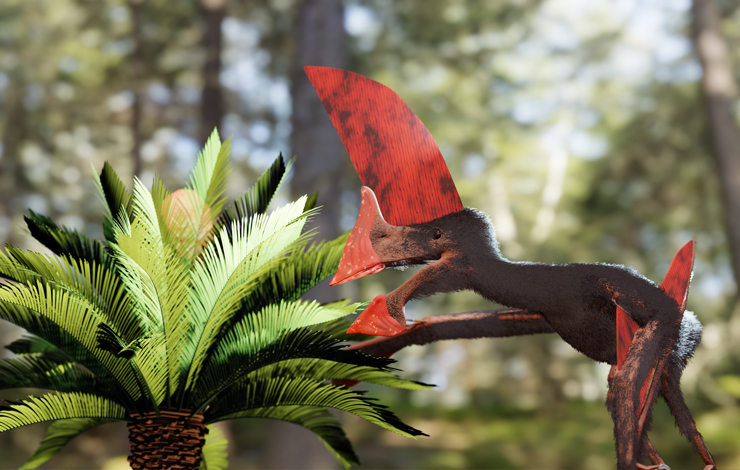30-08-2021

A study developed by a team of researchers from four universities in Brazil and the NOVA School of Science and Technology, in Portugal, was recently published in the scientific journal PLOS ONE. The article presents the most complete fossil of the Brazilian pterosaur, found in Chapada do Araripe, Brazil, which preserves most of its bones and soft tissue remains. The investigation, coordinated by Fabiana Costa (Federal University of ABC), has as its first author Victor Beccari, from the University of São Paulo and the NOVA School of Science and Technology . In addition to the two scientists, the group also includes researchers from the Federal University of Pampa, São Paulo State University, São Paulo University and the Lourinhã Museum (Portugal).
Chapada do Araripe, in northeastern Brazil, is known worldwide for its pterosaur fossils. Related to dinosaurs, these extinct flying reptiles already populated the skies before the appearance of the first birds. Among the pterosaurs of Araripe, the strangest ones are probably the tapejarídeos, animals without teeth and with giant crests on top of the head. Even so, until the publication date of this scientific article, the Araripe tapejaridae were known only by fragments and incomplete skeletons.
“So far, tapejaridae are known in Brazil, China, Spain and Morocco. They are toothless pterosaurs and usually have cephalic ridges that occupy up to three-quarters of the surface of the skull. Despite being known for numerous fossils, complete specimens are very rare”, says Victor Beccari. The fossil, stored at the Geosciences Institute of the University of São Paulo, is one of those exceptional cases.
The skeleton, probably the most exceptional ever found in Brazil, belongs to the species Tupandactylus navigans, an animal previously known only for isolated skulls. It is over eight feet tall and has a crest about half a meter high on top of its head. When described, the pterosaur was also submitted to computed tomography, which allowed the observation of structures still buried in sediment.
From the study of its anatomy and comparisons with other known species of pterosaurs, it was concluded that this animal would have spent most of its time feeding on land, not being a very good flyer. Scientists further speculate that both its massive cephalic crest and its tooth (mandible) crest may be features associated with sexual dimorphism (ie, differences between males and females).
“This Brazilian fossil is of worldwide importance and will be seen as the Rosetta Stone of this type of pterosaurs, in a study whose first author is Victor Beccari, one of the most brilliant students who came out of our Master's Degree in Paleontology” praises Octávio Mateus, Professor at the NOVA School of Science and Technology and researcher at the Lourinhã Museum.
Press